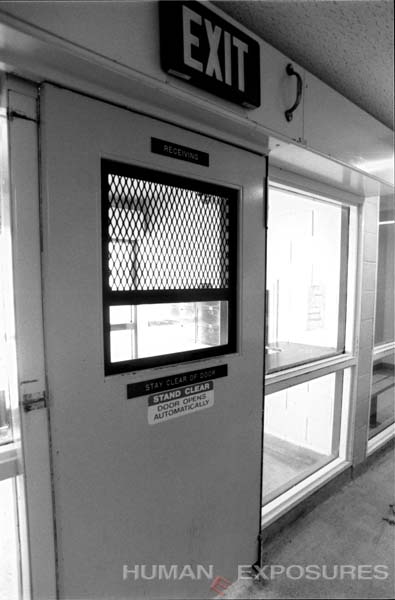
CDC Poster, 1940
In Dallas, there is a debate raging over the proper way to deal with prostitution offenders. On one side, a police officer Randy Watkins from Ft. Worth endorses the reintroduction of a bill increasing the penalties for offenders caught in or near community spaces. School yards, public parks, churches and child care facilities all being examples of the public spaces in question. Officer Watkins says that, once enacted, word of the higher sentences will act as a deterrent to further crime.
On the other side of the argument is Judge Peggy Hoffman, presiding judge of a special court that rehabilitates prostitution offenders. At a recent hearing by the House Criminal Jurisprudence Committee, she stated publicly that increased jail time would be the least effective way to stop the “revolving door” that keeps prostitutes on the streets.
Erin Mulvaney, a staff writer for The Dallas Morning News, reports:
Hoffman disagreed, saying that increasing the jail time would not deter women from committing the crime. In Dallas County, 98 percent of women charged with prostitution opted to take jail time. The average time served in jail for prostitution is 10 to 20 days. That costs the city of Dallas $56 a day.
Judge Hoffman, it appears, is not alone in sharing this view. Mulvaney reports:
State Rep. Paula Pierson, D-Arlington, agreed that more jail time may not be the answer.
‘I’m sure some women aren’t victims of child abuse, some might not be drug addicts, but the majority of them are victims. They have been victimized all their lives,’ Pierson said. ‘It’s a bigger problem, a complicated problem.’
Acknowledging the social complexity of the issue is a start, but there is much more to be done. Hoffman favors cracking down on those who promote and enable the prostitution in the first place:
Hoffman also called for increased penalties for the promotion of prostitution, the ‘pimps,’ and for the solicitors, or the ‘Johns.’ In fiscal year 2009, there were 61 arrests for the promotion of prostitution, compared with 2,500 for prostitution itself.
Pierson also stated that her office will be monitoring Hoffman’s special court to determine its effectiveness.
What are your thoughts on rehabilitation vs. incarceration? We would love to hear them in the comments!
Source: “Dallas County judge urges rehabilitation over long jail terms for prostitutes,” The Dallas Morning News, 09/01/10
Image by pingnews.com, used under its Creative Commons license.
Visit Us on Facebook: Humane Exposures Publishing , downTownUSA, Maggots in My Sweet Potatoes, It’s More Expensive To Do Nothing

 Recidivism: returning to a behavior pattern despite negative reinforcement. It’s a term most often used in cases of criminal activity or substance abuse. It is a chronic problem in the penal systems around the world, not just in the United States.
Recidivism: returning to a behavior pattern despite negative reinforcement. It’s a term most often used in cases of criminal activity or substance abuse. It is a chronic problem in the penal systems around the world, not just in the United States.







